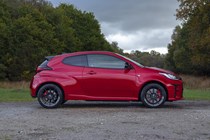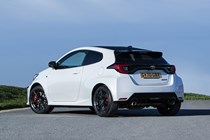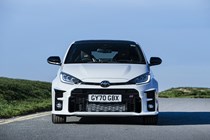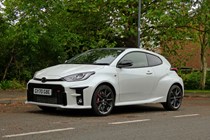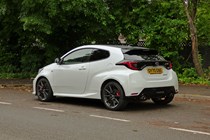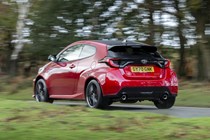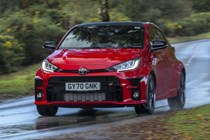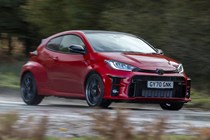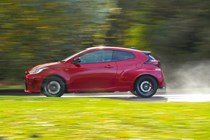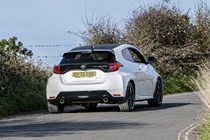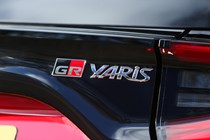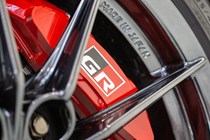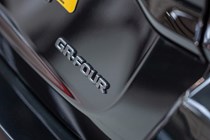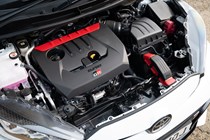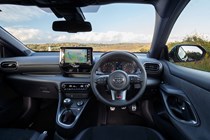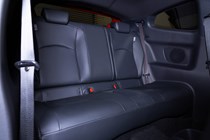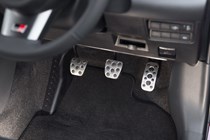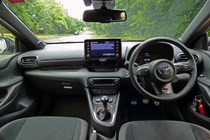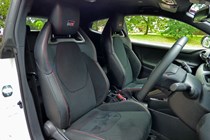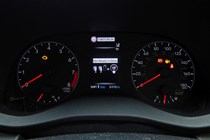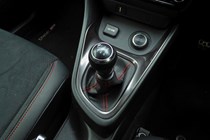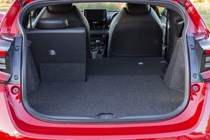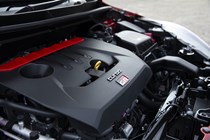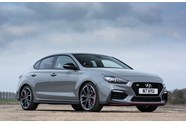
Toyota Yaris GR Yaris review
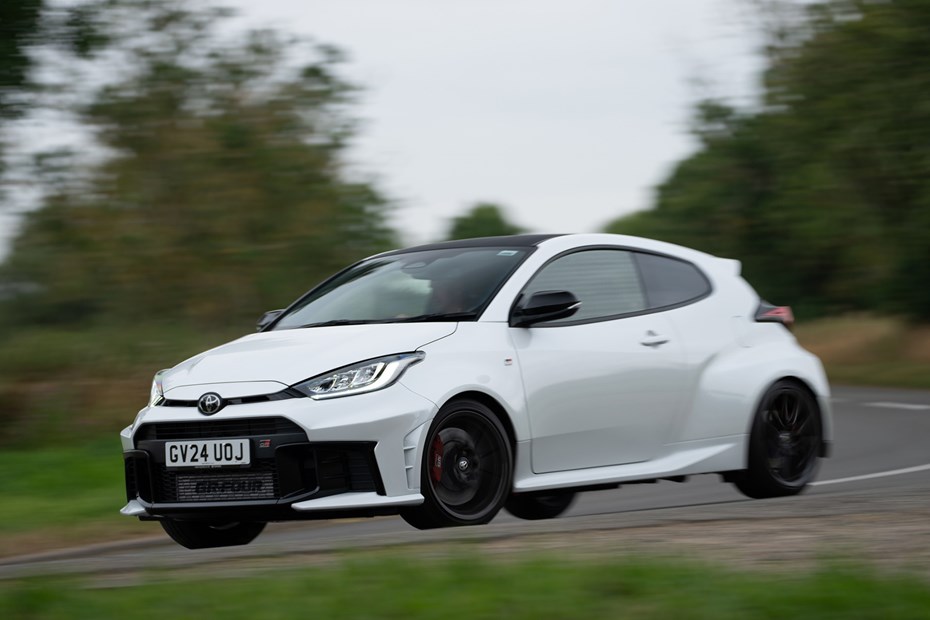
At a glance
| Price new | £44,250 - £60,000 |
|---|---|
| Used prices | £18,552 - £46,398 |
| Road tax cost | £190 - £600 |
| Insurance group | 35 - 44 |
Get an insurance quote with

|
|
| Fuel economy | 29.4 - 34.3 mpg |
| Miles per pound | 4.3 - 5.0 |
| View full specs for a specific version | |
Available fuel types
Petrol
Pros & cons
- Fabulous acceleration and performance
- Four-wheel drive handling is safe and exciting
- Compact and confidence inspiring
- Feels special
- Sounds less than exciting
- High seating position isn't sporty
- Too extreme for daily driving?
- Less practical than regular Yaris
Toyota Yaris GR Yaris rivals
Overview
Despite sharing a name with the five-door Yaris, the Toyota GR (Gazoo Racing) Yaris performance hot hatchback model should be viewed as a separate car entirely. Built on a unique platform and sharing just four exterior body parts, the GR Yaris was built to satisfy WRC (World Rally Championship) regulations stipulating that any competition car must share a certain number of components with its road-going counterpart.
The end result is something really rather special. Developing 261hp and 360Nm of torque, it sends power to the road via a six-speed manual gearbox and Toyota’s own GR-Four all-wheel drive system, heady numbers for a car that’s similar in size (it’s three-door only) to a Ford Fiesta ST.

In fact, it’s closer on performance (and thrills) to larger and more powerful hot hatches such as the Renault Megane RS, Hyundai i30 N and Honda Civic Type R.
How much space is there?
Since the GR Yaris is strictly a three-door model – the regular version is strictly a five-door – you’d expect rear seat space to have taken a hit. Access to those rear seats are limited, and while it’s managed to retain a good amount of legroom for adults with plenty of feet space under those high-set front seats, the lack of headroom is the most limiting factor.
Thanks to that sloping roof, you’ll struggle to fit anyone taller than 5ft 8inches, so this is best reserved for children and smaller teenagers.
Boot space and storage
Boot space has also taken a hit compared with the regular Yaris, and that’s even with Toyota generously quoting up to the roof, at 207 litres. The typical figure measuring up to the window line, with all seats up, is 174 litres and you won’t find much space underneath the floor either, as that’s where the battery sits.
With the dash being the same structure as the regular Yaris, storage space up front is almost identical with just the absence of a front centre cubby box that doubles as an armrest.
Read more about the regular Toyota Yaris’ practicality
Is it easy to park?
Thanks to its small footprint, the GR Yaris remains easy to manoeuvre. The turning circle hasn’t been compromised by much and despite the smaller rear windows, visibility isn’t a big issue. The large door mirrors help, but taller drivers may find the positioning of the rear view mirror a little awkward – it’s so close in proximity it’s almost obstructing your left eye’s peripheral vision, hiding cars and pedestrians enough that you find yourself peering around it.
The absence of a rear windscreen wiper might prove a little tricky in heavier rain, while the flimsy parcel shelf can be an annoyance when it gets stuck in windy conditions and ends up blocking your rear view out.
What’s it like to drive?
The engine in the GR Yaris is a 1.6-litre three-cylinder turbocharged unit, and thanks to a power bump in the tuning for the 2024 update, it produces 280hp and 390Nm of torque. Like the rest of the car, it was specifically designed to be competitive in the WRC and thus features a level of pedigree seldom found in small hot hatches.
The 0-62mph time is just 5.2 seconds, while top speed is limited to 143mph, yet the figures only tell part of the story. This is a wonderfully flexible engine, with maximum pulling power available between 3,000-4,600rpm delivering a brawny, urgent feel that leaves you questioning how much slower it is than a 320hp Honda Civic Type R. Not much, is the answer.
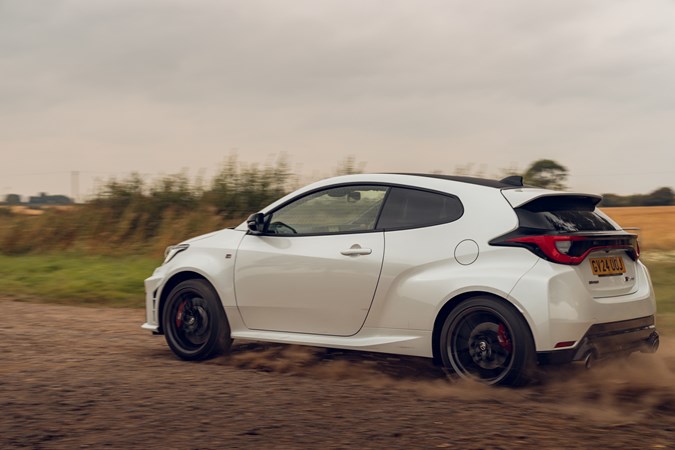
And yet, there’s still enough to make you want to rev the engine hard and go beyond the 6,500rpm peak power point. It’s addictive and slightly raw (it sounds like a diesel minicab on startup), yet it’s all the better for it.
Some may be disappointed that it doesn’t produce the most sonorous sound – the Active Noise Control (where engine noise is piped in through the speakers) is a little OTT and there is absolutely no exhaust note coming out of those twin pipes – but the feeling it engenders in the drive makes you want to work it hard through the gears.
The six-speed manual gearbox, meanwhile, feels like an evolution of what you got on the Toyota GT86 sports car. There’s still the same level of tactility and involvement, yet the gearstick movement through that narrow gate is slicker and more precise – even if the overall throw could be shorter.
What’s its handling like?
Needless to say, the GR Yaris doesn’t handle like a regular Yaris. Power is distributed by Toyota’s own GR-Four all-wheel drive system and as a result the level of traction on offer is prodigious. Even on wet, leafy country roads the GR Yaris sticks to the tarmac like few other cars on sale today.
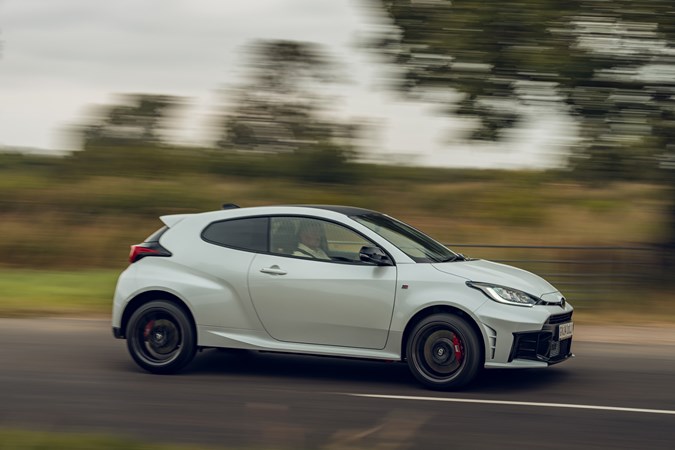
The torque distribution between driving modes has also been revised for the 2024 GR Yaris. Normal still delivers a 60:40 split (front/rear) but the new Track mode introduces a variable torque balance between 60:40 and 30:70, so you can enter a corner with the same front-bias balance, but then exit with more power going to the rear for better acceleration. Gravel mode, meanwhile, offers even greater balance with a 53:47 split, though will adapt to the way you drive or the road conditions it detects.
Unlike the front-wheel drive Ford Fiesta ST and Honda Civic Type R, it’s harder to adjust the car’s line mid-corner with a lift off the throttle, yet you do get the benefit (especially in the Track drive mode), of being able to drift it (where the rear of the car breaks traction and steps out of line), but that does require quite a lot of space. Yet, because of the all-wheel drive safety net, such antics are very easy to control and enjoy.
What’s especially appealing about the way the GR Yaris drives, however, is its diminutive size out on the road. Many modern high-performance cars are difficult to thread down narrow country lanes at any real speed, yet the GR Yaris solves this with a short wheelbase and width.
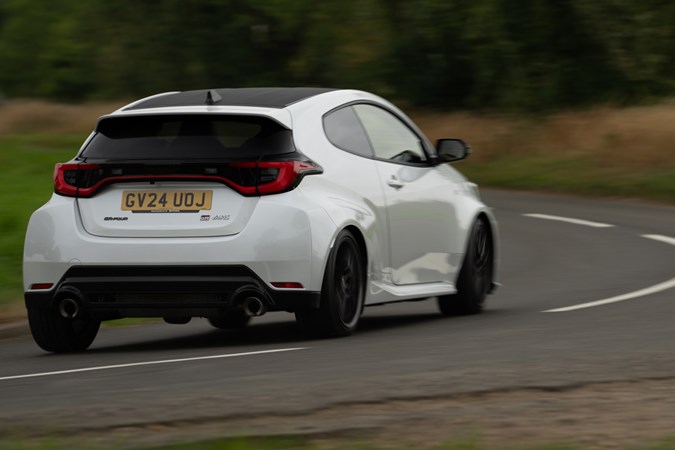
It’s also super-stiff and responsive, so – although the ride is undoubtedly firm – it makes up for this with electric agility and responses.
What’s the interior like?
The 2024 GR Yaris has a slightly revised interior. It’s become more driver-centric, with a wrap around dash that encircles the front right seat. The hardware is a little plastic-y and the overall environment is bereft of much comfort, but there’s an old school retro feel about the whole thing.
The car has a cockpit now, or at least something truer to the common understanding of the word. It looks a bit 80s, but then this is an old school hot hatch in essence, all wound up and rambunctious, so it just works
The GR Yaris does compromise on everyday comfort in certain areas, but it’s not a big enough deterrent for daily use – even less so if you only intend to drive one occasionally.
We’ll start with the positives. The front seats are grippy and provide plenty of support thanks to generous bolstering. Keen drivers will likely find themselves perched a little high, but thankfully the seating position is comfortable with the pedals, gearshift and steering all having a good feel and weight to them.
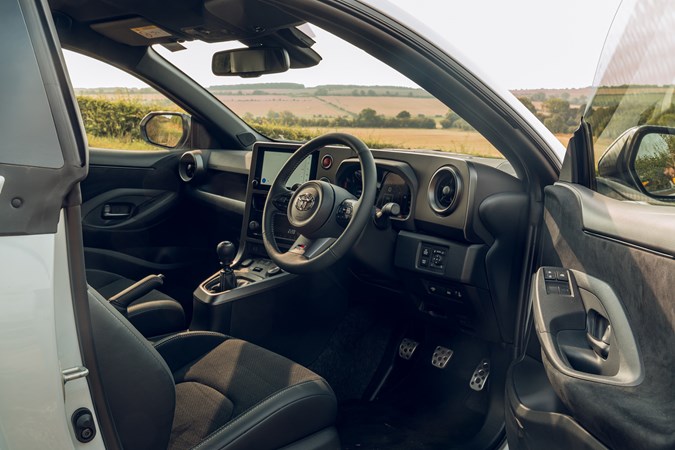
What’s more, for those who aren’t yet comfortable with heel-and-toe gearchanges, the GR Yaris has a rev-matching system that can blip the engine for you on down changes.
The ride quality, although firm around town, is never as busy as a Ford Fiesta ST’s. The long-travel suspension allows the GR Yaris to flow and breathe over bumps, especially as speeds increase. Combine all this with standard-fit adaptive cruise control and the GR Yaris is quite well-equipped to tackle a long-distance journey.
What you may find a constant companion is road noise. Even at 30mph you’ll notice a high level of resonance in the cabin compared with most hatchbacks on sale. Combine this with the occasional clunks from the transmission and vibrations sent into the cabin and the GR Yaris feels a little old-school.
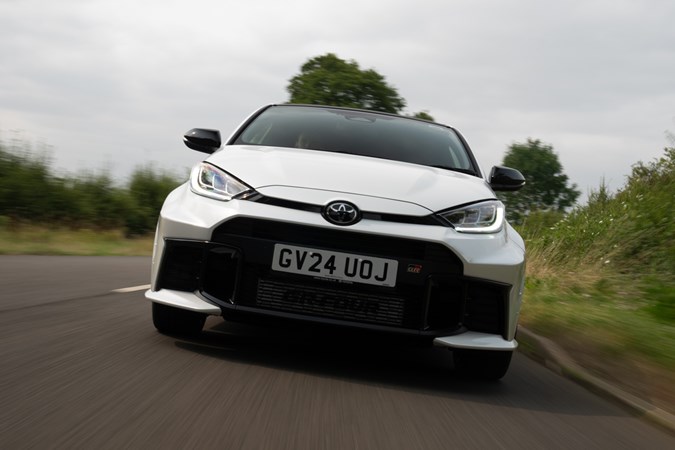
The six-speaker stereo struggles to drown it all out on the motorway (the eight speakers on the Convenience Pack may fare a little better, or even consider upgrading to aftermarket ones), but in a car that feels this special, the compromises don’t seem to matter as much.
What models and trims are available?
The GR Yaris is now offered in just one spec, so there’s hardly a tickle of customisation involved in the build process, but there are a couple of special edition models also available for if your pockets are especially hot. The base-spec GR Yaris starts from £44,250 with a manual, or £45,750 with the automatic. For your money, you get Toyota’s Safety Sense system which includes adaptive cruise control, lane keep assist and road sign recognition.
You also get an 8-inch infotainment display, wireless Apple CarPlay and Android Auto connectivity, an Ultrasuede upholstery trim and plenty of GR branding. It doesn’t feel high-tech nor lavishly decorated, but then for a machine designed to main-line driving thrills as its bread and butter, it doesn’t really leave you wanting either.
Above the base-spec GR Yaris, two special edition models now exist in the range: Ogier and Rovanperä. Named after two of GR’s rally world champions, their up-rated car feature unique driving capabilities, including a Donut mode in the Rovanperä Edition and two extra driving modes for Ogier, with unique, rear-biased torque distributions on offer. Unique paint jobs and other styling quirks are also thrown in, but both come at a premium, with a set price of £60,000 each.
How much does it cost to run?
As you’d expect, the GR Yaris hot hatch will cost more to run than regular models. For starters, claimed fuel economy comes in at 34.3mpg on the combined cycle – significantly less than any other version. We saw an indicated 30.7mpg during our time of testing, and despite the larger 50-litre tank compared with a regular Yaris, the range seems to drop quite quickly when you make use of the performance.
The insurance rating will also be considerably higher, with CO2 emissions of 186g/km, plus you’ll have to factor in replacing those performance tyres. It’s worth noting however, that the five-year, 100,000-mile warranty still applies.



